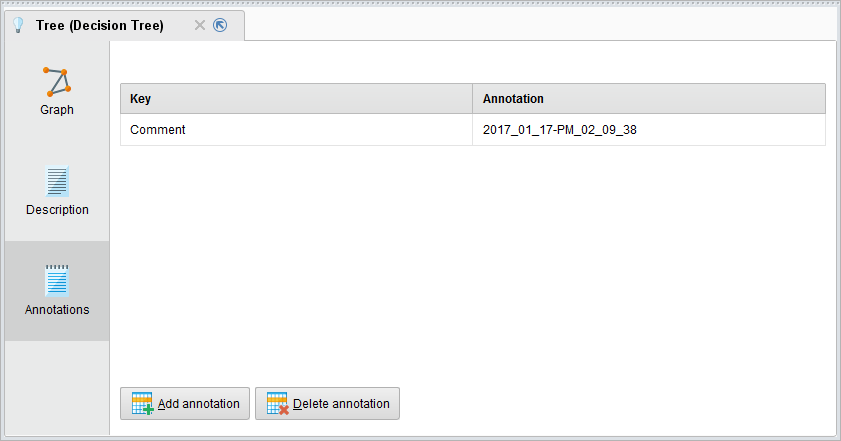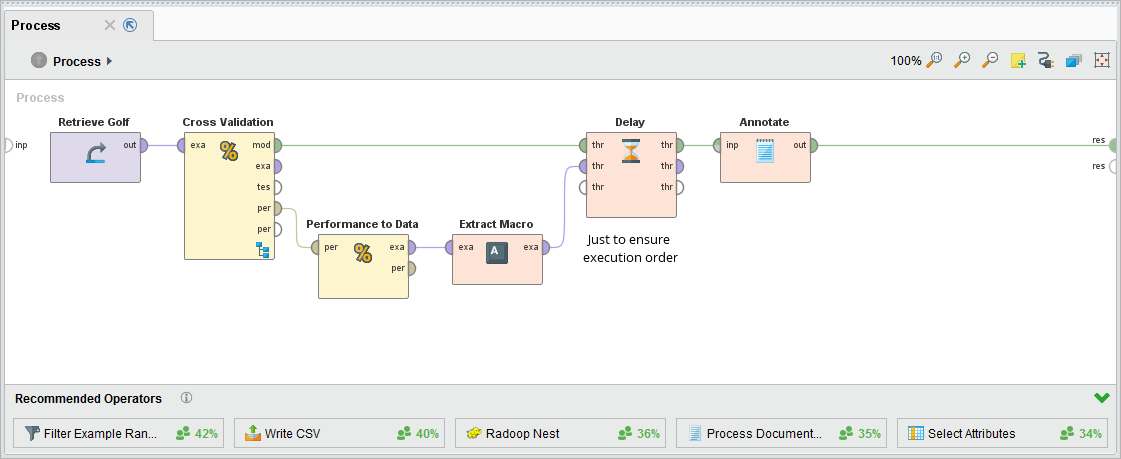How to Use Annotations to Attach Performances and Timestamps to Models
 MartinLiebig
Administrator, Moderator, Employee-RapidMiner, RapidMiner Certified Analyst, RapidMiner Certified Expert, University Professor Posts: 3,533
MartinLiebig
Administrator, Moderator, Employee-RapidMiner, RapidMiner Certified Analyst, RapidMiner Certified Expert, University Professor Posts: 3,533 While storing an object like a Model or an ExampleSet you might also want to store additional information about it. This might include the source of the file, a timestamp or the predictive performance of a model. Doing this in a seperate file might be unwieldy. RapidMiner offers a functionality called Annotation to add these information directly to the object.
Adding Timestamps to Models
A common use case to for annotations is to timestamp models. This can in principal also be done using a timestamp in the filename, but having a comment with the timestamp is often easier.
The operator to create an Annotation is called Annotate. The timestamp can be added by using the predefined macro %{t}.
To view this you can go into the results view. Every object in results view has an tab called Annotation, where you can see your new comment.
If you would like to have a different time stamp format you can create one with the Generate Macro operator. To get the annotation as an ExampleSet you can use the Annotation To Data operator.
Adding Performances To Models
Another connected use case is to add the performance of a model to the model itself. That can also be done using the Annotate Operator. The major difference is that we need to prepare our performance value first. In fact we need to store it in a macro. This can be done using a Performance to Data in combination with Extract Macro.

To add more than one performance measure you can use an Aggregate operator to get a |-seperated list. You can replace the | with a Replace operator.
Dortmund, Germany

